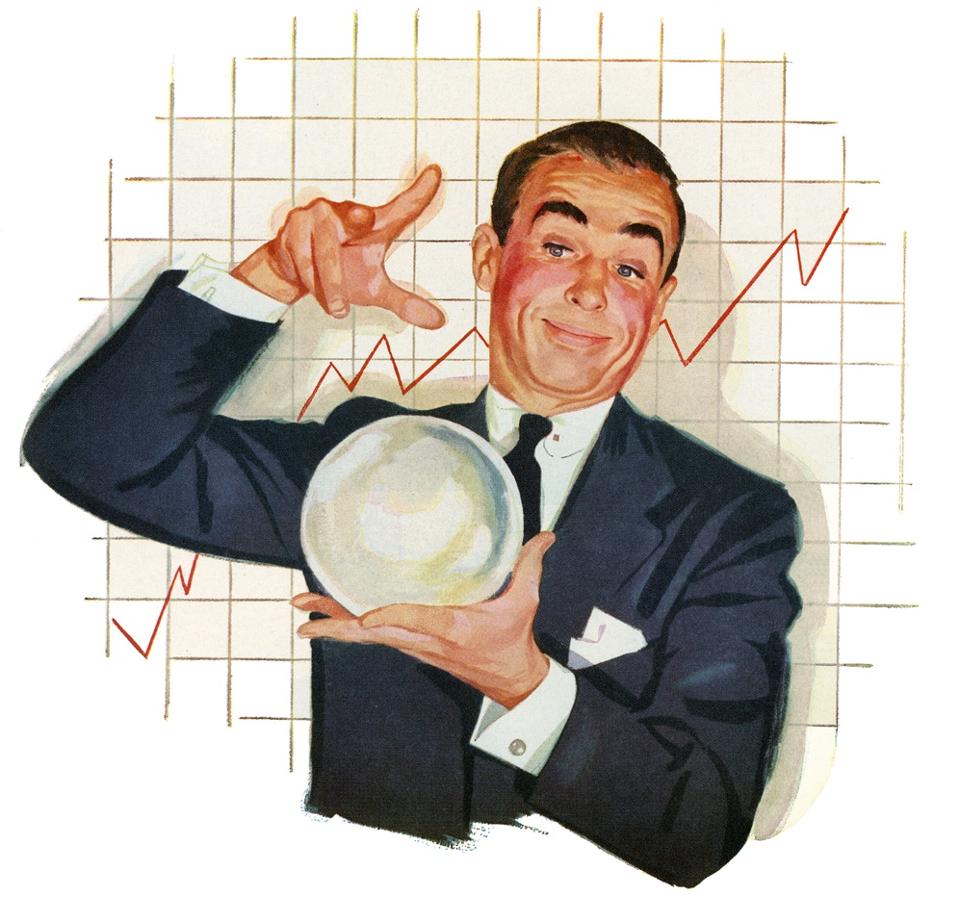“I guess that I just don’t know,” sang Lou Reed. If only Wall Street could admit as much.
Reading Barron’s last weekend, I stumbled upon a reprint of an analyst report that epitomized the ludicrous nature of market predictions.
The report expressed surprise at the S&P 500’s strength in 2023 while tacitly acknowledging the firm’s forecasts were off the mark (though not as wrong as their peers, of course). It described a convoluted methodology involving a price target based on the median of half a dozen models.
Despite these predictive models at their disposal, the report suggested the firm should have focused on only one valuation model. This model “uses the relationship between trailing average P/Es and inflation, GDP, and interest rates dating back to the 1960s to project where the trailing P/E of the S&P 500 should be at year end.”
Are you still with me?
Finally, the report projects the S&P 500 will finish 2024 at 5,300, adding a disclaimer that these predictions could change with evolving consensus forecasts.
OK then.
The Futility of Forecasting
We get suckered at the end of every year. Headlines and cover stories announce: “2024 Market Outlook,” “2024 S&P Forecast,” “Stock Market Predictions for 2024.”
Why do we, the investing public, still heed these prognostications? It may be our desire for predictability in a world that is anything but orderly. We want to believe someone can guide us through the foggy future and are willing to pay for that certainty.
Yet, no one can foresee the future. It doesn’t matter how smart you are or how well-trained your predictive models are. Just remember this: in December 2021, 400 PhDs at the Federal Reserve predicted interest rates would be around 1.75% in 2023. Rates are now over 5%.
The global economy is a beast of a different nature. It’s influenced by countless variables—political events, natural disasters, technological breakthroughs. Trying to forecast market movements in such an environment is like predicting the path of a leaf blowing in a hurricane.
What’s the harm in these off-the-mark predictions? For starters, they lead to misguided investment decisions. Investors, especially the less experienced ones, might take these forecasts as gospel, making moves that could hurt their portfolios in the long run.
Investors who followed bearish Wall Street calls at the end of 2022 left a lot of cash on the sidelines as the S&P rallied over 20% this year.
Protect, Don’t Predict: A Strategy for Individual Investors
So, what should individual investors do? The answer lies in a simple yet powerful strategy: Protect, Don’t Predict.
Prioritize timeless investing strategies over trying to outguess the market’s next moves. This way, you’ll limit your downside risk while still enjoying the positive momentum of a bull market. Here’s how:
- Buy Quality Stocks: Companies with strong balance sheets, solid management, and a history of growing dividend payments are reliable options in any economy and are built to withstand tough times. Find companies that are leaders in their respective industries and have the best chance to stay in that position.
- Set Up an Emergency Fund: A simple solution that many ignore. Maintain a percentage of your wealth in a conservative account with low-risk assets or money market funds. This way, you’ll avoid getting caught in a position where you’re forced to sell investments at an inopportune time.
- Keep a Long-Term Focus: A long-term perspective will help weather day-to-day market volatility. Panic selling and emotional reactions to news are the enemies of long-term success in the stock market.
- Stay Informed: Keep current with the news in a way that works for you. Read up on the market and use that knowledge to make wiser investing decisions.
- Trust Your Instincts: Don’t underestimate your own investing instincts. They’re honed from your daily experiences and what you read or watch in the news. Thinking critically and deeply may be more valuable than any analyst’s predictive modeling.
Investors can navigate the market’s uncertainties more effectively by focusing on protection strategies. This approach may not be as flashy as predicting the next big market move, but it’s a more sustainable and less stressful way to manage your investments.
Embrace the Market’s Uncertainty
Lou Reed wrote, “Life’s like Sanskrit read to a pony,” a humorous sentiment investors should remember while navigating through the fog of Wall Street’s inscrutable forecasts.
As a savvy investor, it’s essential to question popular narratives, focus on informed decision-making and trust your common sense instead of complex models.
After all, the only certainty in the market is its uncertainty.

